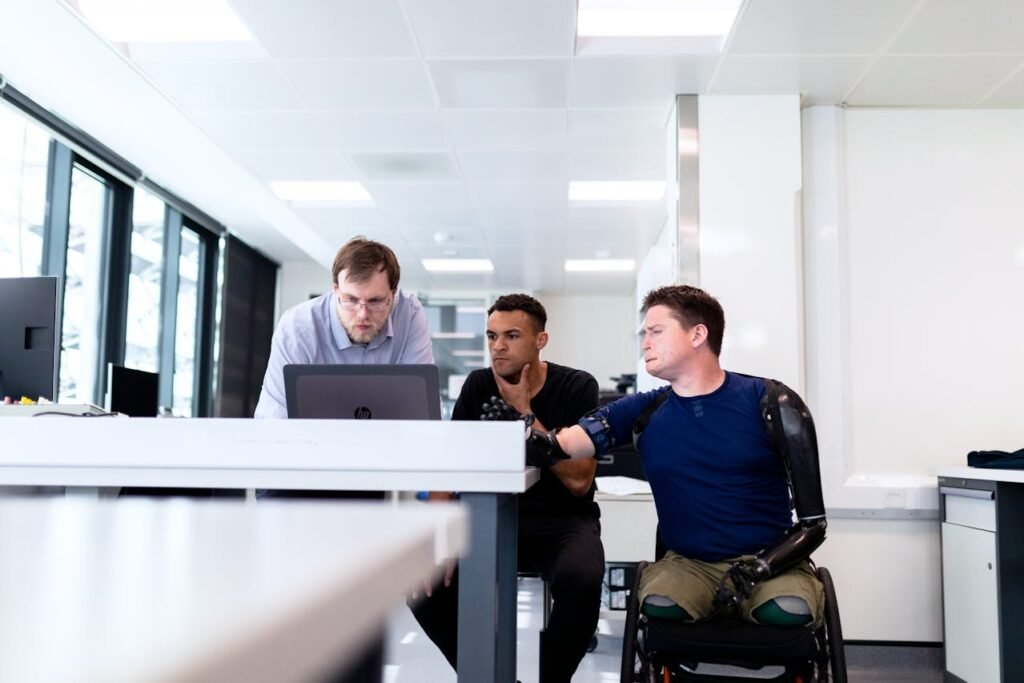Losing a limb can feel overwhelming, but prosthetic technology has advanced to a point where it can truly transform lives. Choosing the right prosthetic limb is not just about functionality—it’s about finding a solution that fits your lifestyle, preferences, and long-term goals. With so many options available today, understanding where to start can be challenging.
This guide is designed to help you navigate the world of prosthetics. We’ll break down the different types of prosthetic limbs, their features, and how to determine which one suits your needs best. Whether you’re considering a prosthetic for yourself or a loved one, this article will provide the clarity and insights you need to make an informed decision.
Understanding Prosthetic Limbs
Prosthetic limbs are more than just replacements for lost body parts. They are carefully designed tools that can restore mobility, functionality, and even a sense of self. By combining technology and innovation, prosthetics are tailored to fit individual needs, allowing users to perform daily activities with ease.
How Prosthetics Work
Prosthetics function by mimicking the movement and appearance of natural limbs. While some are purely cosmetic, others integrate advanced technology to replicate functions like gripping, walking, or running.
Prosthetic limbs consist of several key parts: a socket to attach to the body, a pylon that acts as the frame, and a covering that can be customized for aesthetics.
Advanced models may include sensors or motors for greater control, offering an experience that feels more natural and intuitive.
Why Choosing the Right Prosthetic Matters
Selecting a prosthetic isn’t just about replacing a limb—it’s about improving your quality of life. The right choice depends on factors like your level of activity, the type of limb replaced, and your budget.
A prosthetic that works for an athlete, for example, will differ significantly from one designed for someone whose activities are more sedentary. It’s also important to think about comfort, as a poorly fitting prosthetic can cause discomfort or even long-term complications.
Types of Prosthetic Limbs
When exploring prosthetic limbs, you’ll encounter several main categories, each suited to specific needs. Understanding these types will help you identify the best option for your situation.
Cosmetic Prosthetics
Cosmetic prosthetics are designed to look like natural limbs. While they lack functional components, they are an excellent choice for individuals who prioritize appearance.
These prosthetics are lightweight and can be customized to match your skin tone, helping you regain a sense of normalcy.
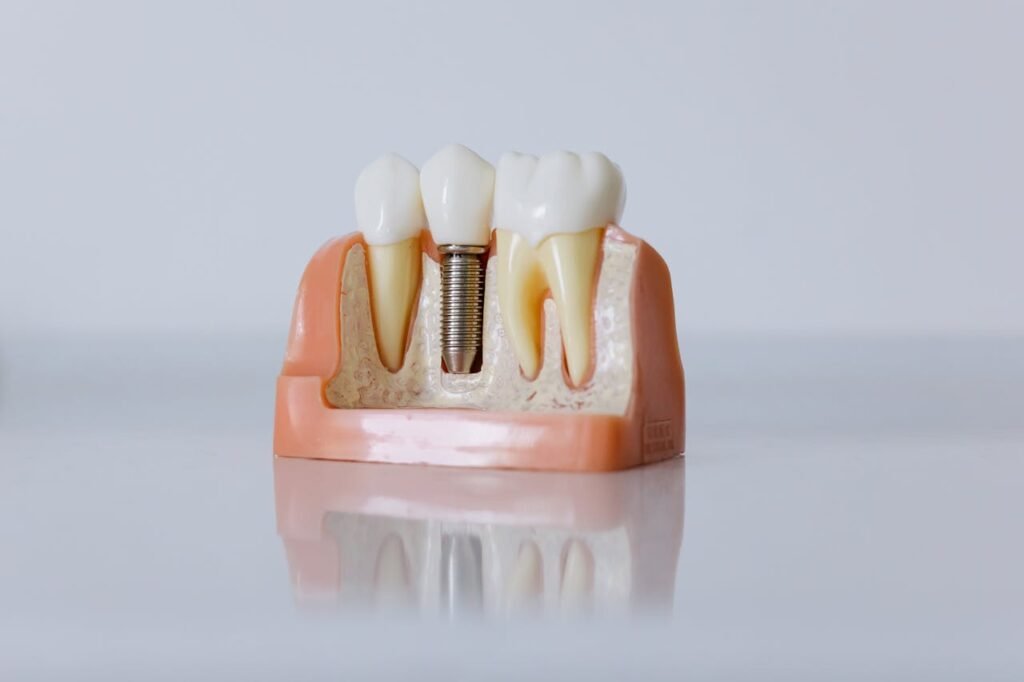
Functional or Mechanical Prosthetics
These prosthetics are built for performance. Mechanical prosthetics rely on simple mechanisms to perform specific tasks, like gripping objects or stabilizing your posture.
They’re durable and easy to maintain, making them a popular choice for individuals who need reliable functionality without the complexity of advanced technology.
Bionic or Myoelectric Prosthetics
Bionic limbs represent the cutting edge of prosthetic technology. Controlled by electrical signals from your muscles, these prosthetics mimic natural movements with remarkable precision.
They are ideal for individuals looking to regain complex motor functions and are often used in cases where a high degree of dexterity is required, such as using tools or typing.
Prosthetics for Lower Limbs
Lower limb prosthetics include options for those with below-knee or above-knee amputations. These prosthetics are designed to restore mobility, with some models offering features like shock absorption and microprocessor-controlled knees for smoother walking.
Choosing the right lower limb prosthetic depends on factors like walking habits, terrain, and activity level.
Prosthetics for Upper Limbs
Upper limb prosthetics cater to those with amputations involving the arm or hand. From basic hooks to sophisticated bionic hands like Grippy™ by Robobionics, these solutions enable users to perform daily tasks with greater independence.
They often integrate adjustable grips and fine motor controls to replicate natural hand movements.
Factors to Consider When Choosing a Prosthetic Limb
Selecting the best prosthetic limb for your needs requires careful thought and consultation with professionals. Here are the key aspects to evaluate as you begin your journey.
Understanding the User’s Environment
One of the most critical, yet often overlooked, factors is the environment in which the prosthetic will be used. Users living in urban areas may prioritize prosthetics with features that handle frequent walking on flat surfaces, while those in rural settings might need durability for rugged terrain.
Businesses should take a proactive approach in understanding these environmental factors during consultations.
Incorporating virtual or physical assessments of the user’s environment can provide invaluable insights. For example, a video walkthrough of a user’s daily surroundings can highlight potential obstacles, enabling prosthetists to recommend specific enhancements like reinforced materials or specialized treads.
Businesses that adapt their products to these real-world conditions create prosthetics that genuinely meet the user’s needs.
Considering Technological Compatibility
The rise of smart prosthetics has introduced a new dimension to the decision-making process. Bionic limbs often integrate with apps or external devices for adjustments, tracking, and performance monitoring.
Businesses should ensure that users are comfortable with the technological interface and have access to the necessary devices and training to maximize the prosthetic’s potential.
Providing easy-to-use tutorials, one-on-one onboarding sessions, and ongoing tech support can make these advanced features accessible to users of all technical skill levels.
For example, offering workshops on optimizing app settings or pairing prosthetics with smart home devices can significantly enhance user satisfaction. Such initiatives also position businesses as forward-thinking and customer-centric.

Balancing Functionality with Aesthetics
While functionality often takes precedence in prosthetic design, aesthetics can play a crucial role in a user’s decision. A prosthetic that looks natural and aligns with a user’s personal style fosters a sense of confidence and normalcy.
For some users, this might mean a lifelike appearance, while others might prefer bold, customizable designs that reflect their personality.
Businesses can offer value by providing customization options, such as skin tones, patterns, or colors, to meet diverse preferences. An online configurator tool, for instance, could allow users to visualize their prosthetic’s appearance before finalizing their choice.
This approach not only enhances user satisfaction but also empowers them to view their prosthetic as a positive and unique extension of themselves.
Assessing the Support Ecosystem
Choosing a prosthetic limb also involves evaluating the long-term support available to the user. Businesses must recognize that their role doesn’t end with delivering the device; it continues through maintenance, upgrades, and emotional support.
A robust ecosystem that includes local service centers, rehabilitation programs, and user support groups ensures a seamless post-purchase experience.
For businesses, creating partnerships with nearby clinics, physiotherapists, and counselors can enhance the support ecosystem. Additionally, establishing a customer portal for tracking service history, booking appointments, or accessing educational resources helps users feel supported and engaged.
The more accessible and proactive the support, the more likely users are to trust and recommend the business.
Encouraging Goal-Oriented Decision Making
Selecting a prosthetic is not just about the present—it’s about aligning the choice with future goals.
A student aiming to excel in academics may need a prosthetic designed for long hours of desk work, while an athlete may require a high-performance model capable of withstanding intense physical activity.
Businesses should frame consultations around these aspirations, helping users visualize how the prosthetic can enable their ambitions.
Offering Flexible Trial Opportunities
A prosthetic limb is a significant investment, both financially and emotionally. Giving users the chance to trial a prosthetic before making a final decision can build trust and ensure the product meets their expectations.
Businesses should prioritize flexibility in these trial periods, allowing users to test the prosthetic in various settings to evaluate its true compatibility.
For example, allowing users to trial a prosthetic hand like Grippy™ from Robobionics during everyday tasks—cooking, writing, or using a phone—can help them feel more confident in their choice.
Businesses can further enhance the trial experience by providing guided assistance and feedback sessions to address any concerns during this phase.
Rehabilitation and Adaptation
Adapting to a prosthetic limb takes time and practice. Gamified rehabilitation programs, like those provided by Robobionics, can make this process smoother and more enjoyable.
These programs help users build strength, improve control, and feel more comfortable with their new prosthetic.

The Journey to Getting a Prosthetic Limb
The process of receiving and adapting to a prosthetic limb involves several stages. Each step is carefully designed to ensure the best possible fit, functionality, and user satisfaction. Here’s what you can expect during your journey.
Evaluation and Consultation
The first step is a thorough evaluation by a prosthetist, a specialist in prosthetic limbs. During this consultation, your medical history, physical condition, and personal goals are considered. This assessment ensures the prosthetic limb aligns with your unique needs, whether it’s for everyday use, work, or recreational activities.
At Robobionics, we offer a structured evaluation to guide you in choosing the right prosthetic. Our team collaborates with you to identify the most suitable options, ensuring your decision is well-informed and tailored to your lifestyle.
Trial and Fitting Process
Before committing to a prosthetic, many users undergo a trial period to experience the fit and functionality. This stage allows adjustments to be made to the socket, alignment, or suspension system for optimal comfort. At Robobionics, we encourage users to book a free demo of our flagship bionic hand, Grippy™, to experience its benefits firsthand.
The fitting process is critical to ensure the prosthetic feels natural and doesn’t cause irritation or pressure sores. The goal is to create a seamless interface between the prosthetic and your body, enabling smooth and comfortable use.
Home-Based Rehabilitation
Adapting to a prosthetic limb doesn’t end with the fitting. Rehabilitation plays a key role in helping you regain confidence and master your new prosthetic. Robobionics offers gamified home-based rehabilitation programs designed to make this process engaging and effective.
These programs guide you through exercises that improve control, build strength, and develop the muscle memory needed for natural movements.
For example, our rehabilitation solutions incorporate interactive games that help users practice gripping, lifting, and balancing activities, transforming the learning process into an enjoyable experience.
Overcoming Common Challenges with Prosthetic Limbs
While prosthetics can restore independence, they may also come with challenges that require attention and patience. Being aware of these potential issues can help you prepare and adapt more effectively.
Initial Discomfort
It’s normal to feel some discomfort when first using a prosthetic limb. Your body needs time to adjust to the new device, and minor aches or irritation may occur. Regular follow-ups with your prosthetist are essential during this period to fine-tune the fit and address any issues.
At Robobionics, we prioritize user comfort by designing lightweight and ergonomic prosthetics. Products like Grippy™ are crafted to reduce strain and feel as natural as possible, helping users adapt more easily.
Building Confidence
Using a prosthetic limb in public for the first time can feel daunting. However, with practice and encouragement, many users grow more confident over time.
Gamified rehabilitation programs and support groups can provide valuable emotional and practical assistance during this phase.
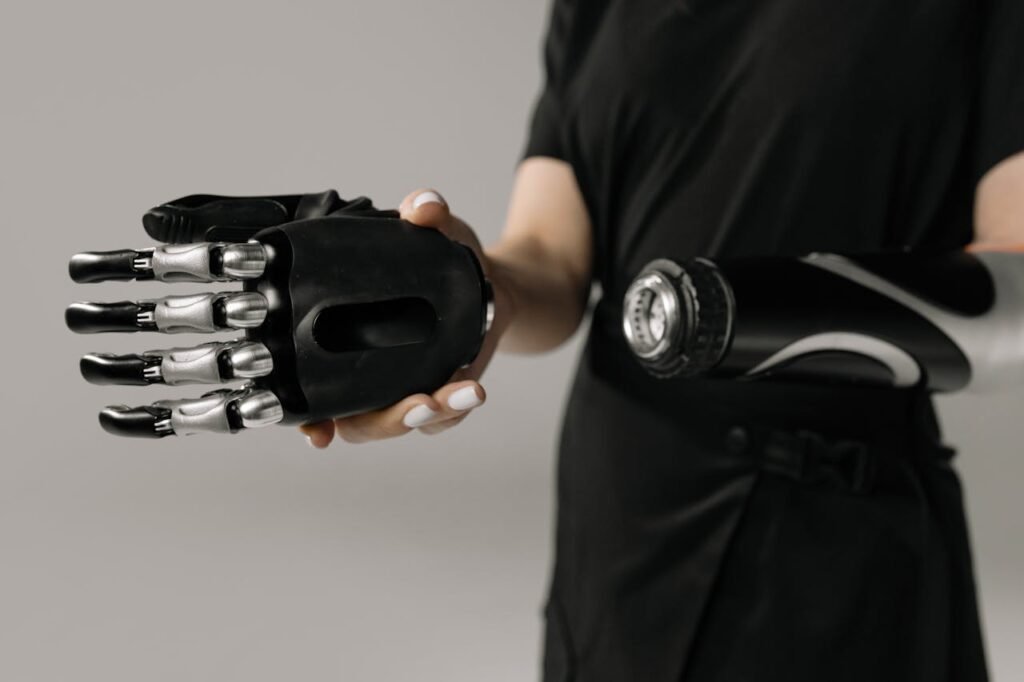
Maintenance and Repairs
Prosthetic limbs require regular maintenance to function at their best. Components like the socket or joints may need periodic adjustments, and advanced models may require software updates.
Robobionics ensures fast and efficient repair services through our local support network, minimizing downtime and inconvenience for users.
Making Prosthetics a Part of Your Life
A prosthetic limb isn’t just a tool—it’s a partner in helping you live life to the fullest. As you become more comfortable with your prosthetic, you’ll discover ways to integrate it seamlessly into your routine.
Seeking Support and Community
Connecting with others who use prosthetics can be incredibly empowering. Support groups and online communities provide a platform to share experiences, advice, and encouragement. They can also be a great source of inspiration as you navigate your own path.
Robobionics is dedicated to fostering a supportive ecosystem for prosthetic users. Our CSR-driven initiatives aim to empower individuals and promote inclusivity, creating a positive impact for everyone involved.
Aligning Prosthetic Features with Lifestyle Demands
For businesses that provide prosthetics, the key to creating lasting impact lies in understanding and addressing the unique needs of each individual.
This begins with a detailed exploration of the user’s daily life, aspirations, and specific challenges. The prosthetic should be designed to enhance the user’s ability to perform specific tasks, whether that involves typing at a desk, handling tools, or participating in sports.
For instance, if a user frequently works with their hands, a bionic hand with customizable grip settings and responsive sensors can be invaluable.
Businesses can enhance user engagement by offering solutions tailored to not just functionality but also the nuances of their day-to-day activities. Including intuitive training tools, like interactive virtual modules, can make the transition to using advanced prosthetics smoother and more enjoyable.
Building Confidence Through Community-Led Engagement
Confidence is often the cornerstone of successfully integrating a prosthetic limb into life. For businesses, fostering this confidence goes beyond product delivery—it involves creating a community-driven ecosystem where users feel supported and understood.
Hosting regular workshops, webinars, or in-person events allows individuals to learn from professionals and fellow users, offering reassurance and motivation.
For example, a business can initiate a “Meet the Experts” series, where users can interact with prosthetists, engineers, and rehabilitation specialists.
These events could also feature successful prosthetic users sharing their journeys, offering inspiration and practical tips. Encouraging users to collaborate, ask questions, and share their own experiences builds a sense of belonging and mutual encouragement.
Encouraging Employers to Support Prosthetic Integration
Prosthetic users often face challenges in workplace settings, such as physical demands or societal perceptions.
Businesses involved in prosthetics can play a significant role in bridging this gap by educating employers about the value of inclusive environments and how prosthetics can enable individuals to contribute effectively to their roles.
Providing tools like workplace adaptation guides or ergonomic assessments tailored to prosthetic users can help employers make necessary adjustments.
By demonstrating how advanced prosthetics can seamlessly integrate with workplace requirements, businesses not only empower users but also foster a culture of inclusion and innovation.
Creating Long-Term Support Systems
Making prosthetics a part of life requires ongoing support, both technical and emotional. Businesses that deliver prosthetic solutions should emphasize creating a framework where users feel connected even after their initial fitting.
Proactive measures, such as regular follow-ups, free adjustment services, and periodic technology upgrades, ensure that the prosthetic continues to meet the user’s needs over time.
Rehabilitation programs should evolve with the user’s progress, introducing new challenges and skills to keep engagement levels high. For example, a gamified program might start with basic motor skills and advance to complex actions like handwriting or using chopsticks.
Such continuous engagement ensures that users not only adapt but thrive with their prosthetic.
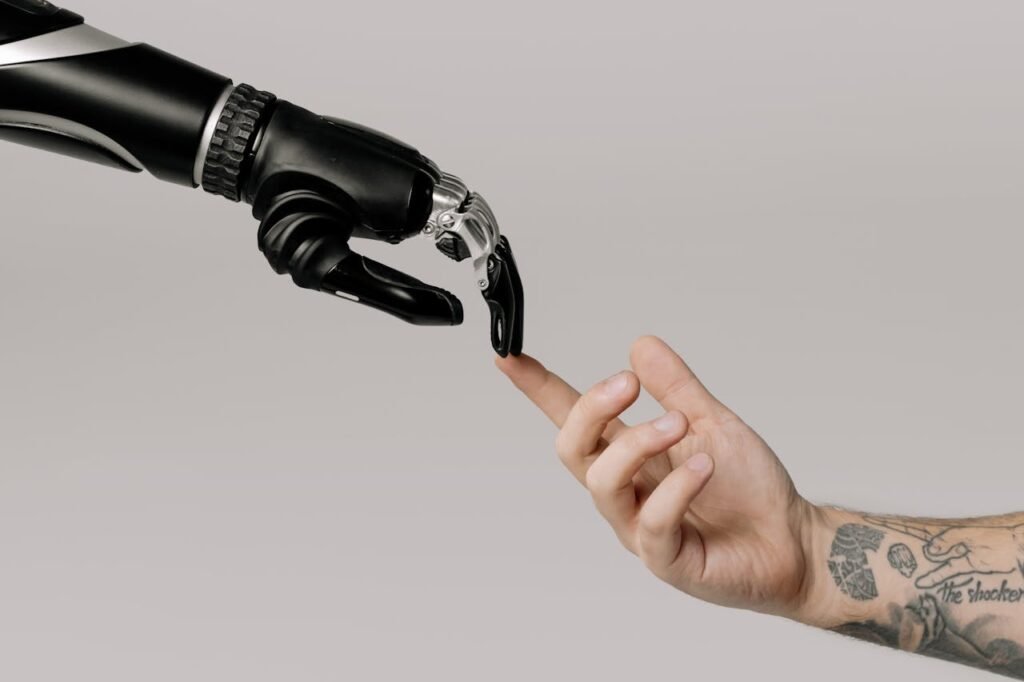
Emphasizing Holistic Well-Being
Lastly, successful integration of a prosthetic limb isn’t purely about physical functionality—it’s about addressing the individual’s mental and emotional well-being.
For businesses, this means offering resources that help users navigate the psychological aspects of prosthetic adoption, such as coping with changes in self-image or overcoming social stigma.
Collaboration with counselors, occupational therapists, or even motivational speakers can create a comprehensive support network. Educational materials that highlight the empowerment and independence prosthetics bring can reshape narratives and encourage users to view their prosthetic as an extension of their abilities, not a limitation.
The Future of Prosthetic Technology
The field of prosthetics is evolving rapidly, with innovations that promise to transform the way individuals with limb loss experience daily life. From advanced materials to cutting-edge integration with the human body, the future holds exciting possibilities for prosthetic users.
Innovations in Materials
One of the key trends in prosthetics is the use of advanced, lightweight materials. Carbon fiber and titanium are now commonly used to create prosthetics that are both durable and comfortable. These materials reduce strain and improve mobility, allowing users to move more freely.
At Robobionics, we’ve embraced 3D printing technology to design prosthetics like Grippy™. This approach ensures precision and enables customization, making each prosthetic a perfect match for the user. The result is a product that is not only lightweight but also ergonomically designed to enhance comfort and usability.
The Role of Artificial Intelligence
Artificial Intelligence (AI) is revolutionizing prosthetics by enabling smarter, more intuitive designs. AI-powered bionic limbs can learn from a user’s movements, adapting to their unique patterns and preferences. These systems can predict and execute actions more naturally, bridging the gap between technology and biology.
For instance, bionic hands with AI-driven control can adjust grip strength based on the object being held, offering both safety and versatility. As these technologies become more accessible, they are redefining what’s possible for prosthetic users.
Advances in Sensory Feedback
One of the most exciting developments in prosthetics is the integration of sensory feedback. Engineers are working on prosthetic limbs that allow users to feel sensations like pressure or texture, creating a more lifelike experience. This breakthrough enhances user confidence and makes tasks like holding fragile objects much easier.
Grippy™ by Robobionics is a step toward this future, offering advanced touch capabilities that enable precise and responsive movements. As sensory technologies continue to improve, prosthetics will become even more seamless extensions of the human body.
Embracing Independence with Prosthetics
Adapting to a prosthetic limb is a journey of rediscovery and growth. It’s about regaining independence, embracing new possibilities, and learning to trust in your abilities again. With the right prosthetic and support system, you can overcome challenges and thrive in every aspect of life.
Focusing on Abilities, Not Limitations
One of the most empowering aspects of using a prosthetic limb is shifting your perspective. Instead of focusing on what’s lost, you can celebrate what’s possible.
Modern prosthetics offer an incredible range of capabilities, from playing sports to performing intricate tasks like cooking or writing. By embracing these tools, you can unlock new levels of independence and confidence.
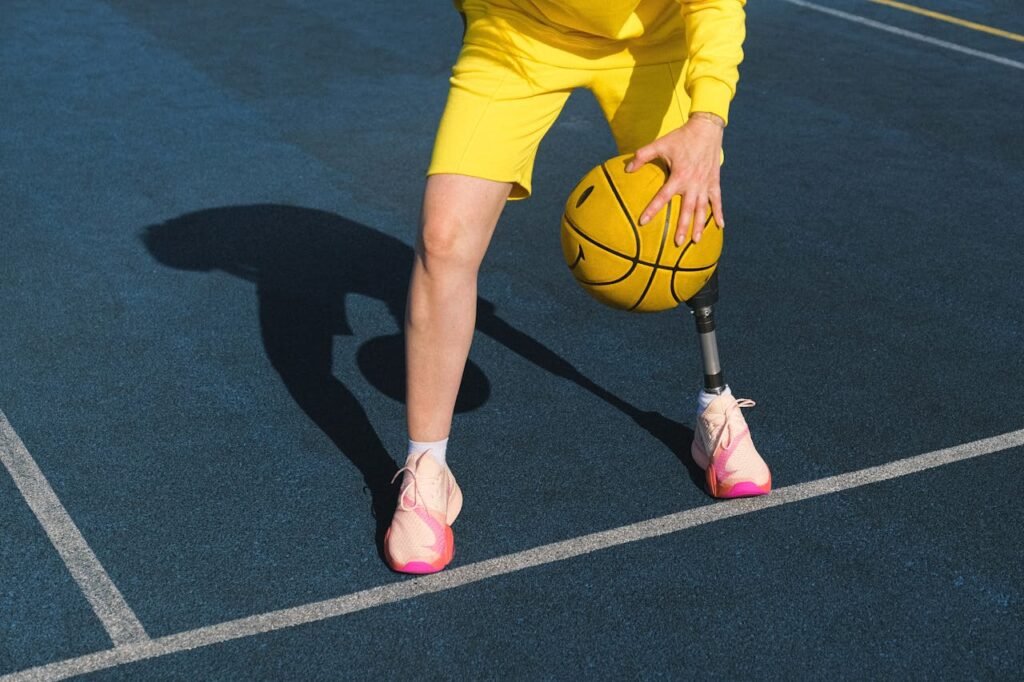
Celebrating Milestones
Every achievement, no matter how small, is worth celebrating. Whether it’s taking your first steps with a new leg prosthetic or mastering the fine motor skills needed to tie your shoelaces, these milestones mark your progress and determination.
Sharing these moments with loved ones or your support network can make them even more meaningful.
Continuous Learning and Growth
The journey with a prosthetic limb doesn’t end with its fitting. It’s an ongoing process of learning, adapting, and growing. Rehabilitation programs, such as the gamified solutions offered by Robobionics, play a key role in this process.
These programs are designed to be both effective and enjoyable, helping users build the skills and confidence needed to excel.
Conclusion
Choosing a prosthetic limb is a deeply personal journey, one that requires careful consideration, expert guidance, and a commitment to embracing new possibilities.
Prosthetics have the power to transform lives, restoring not just physical capabilities but also confidence and independence. From cosmetic options to advanced bionic solutions like Grippy™ by Robobionics, the right prosthetic can open doors to a more empowered future.
At Robobionics, we are driven by a passion for innovation and a dedication to making prosthetics accessible and effective for everyone. Our holistic approach, from evaluation and fitting to gamified rehabilitation, ensures you’re supported every step of the way.
By combining cutting-edge technology with compassionate care, we help you make the most of your prosthetic and reclaim your sense of self.



